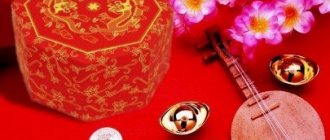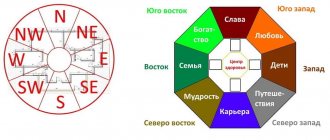Since ancient times, singing bowls have been used in the East for meditation and sound healing. In their origin they are akin to a bell; their other names are Himalayan bowls, rin or suzu. Unlike other instruments of this kind, they are not secured in any way and stand freely on the hand when used. At the same time, the sounds that appear from Tibetan bowls are difficult to compare with anything else: they are unique in their kind and have a healing effect for the body and soul. Let's take a closer look at how to use a singing bowl and how to choose the right one.
What are singing bowls for?
This is not just an instrument, it has a much deeper meaning than just producing sounds for pleasure. Singing bowls of Tibet have a beneficial effect on the human body, helping to correct many chronic diseases and psychological disorders, and are used in spiritual practices and during meditation. Here is a short list of the beneficial properties of the sound vibrations of the Himalayan bowls:
- getting rid of manifestations of neurosis, depression, normalizing the emotional background;
- beneficial effect on blood pressure;
- improvement of the general condition of the body: normalization of metabolism, relief from asthenia and weakness, regulation of the menstrual cycle in women;
- when massaged with bowls: muscle relaxation, elimination of spasms;
- at the level of subtle energy - the ability to balance the chakra, regulate the flow of internal energy of the body.
To understand how to use singing bowls, let's take a closer look at what they are and how they work.
Healing properties of the bowl
The sound of the bowl is unique - there is no other similar instrument and no two bowls sing the same. The vibrations of the bowl cannot cause harm, regardless of whose hands it is in.
Tibetan singing bowls have healing properties
This unique tool is used for:
- relaxation – for neuroses, insomnia, mental disorders;
- meditation - singing the bowl allows you to achieve peace of mind, makes it easier to enter and exit meditation or trance;
- health practices (yoga, Qigong) - regular work with the bowl eliminates symptoms of diseases of the heart and digestive organs, metabolic and hormonal disorders, alleviates headaches, stress, depression;
- massage and work with chakras - influencing the energy channels and centers of a person, sound waves give vigor, energy, and enhance creativity. For vibration massage, bowls can be placed on the human body;
- cleansing the room, filling the internal environment with positive energy (feng shui practices) - vibrations harmonize the space after quarrels, illnesses, moving, transform negative energy into positive;
- structuring water - playing on a filled bowl charges the water, makes it healing - it can be used for drinking or washing.
Thanks to the growing interest in oriental practices and accessories, Tibetan bowls have become popular souvenirs and interior decoration. And the singing of bowls can be heard at concerts and in recordings of ethnic music and new age.
How to choose a singing bowl (part 1)
Legends of the singing bowls
One of the versions of the origin of Tibetan bowls says that previously wandering monks wandered around the world, who carried with them metal alms dishes, where good people put money, rice and vegetables. Each such alms should have been met with great gratitude and prayer. Through this gratitude they achieved enlightenment and love for the world around them. And the sound, which later began to be extracted from metal bowls, is considered a symbol of spiritual unity with all living things.
The second legend, a mystical one, says that in ancient times Tibetan lamas could communicate in a trance with powerful spirits who gave people knowledge of a sacred object in the shape of a bowl, which would allow them to communicate with higher beings and achieve enlightenment. The spirits named seven metals from which the bowl could be made, but the resulting tools did not evoke a connection with the Cosmos, then the monks again sent their prayers to the spirits. In response, a meteor shower occurred over Mount Kailash, and the lamas decided to use meteorite iron in an alloy - this is how real magic bowls appeared.
Description of the tool
The Tibetan singing bowl looks like a deep bowl or plate made of metal. They always come complete with a special wooden stick, similar to a pestle or mallet, which is necessary in order to receive sound vibrations.
Previously, bowls were made of bronze with an admixture of noble metals and alloys - this had a beneficial effect on their sound, and the manufacturing process was completely done by hand. When using singing bowls made today, you may notice that the sound quality is not as deep as that of instruments made in the old days, but they do not lose their positive properties.
There is a tradition of putting sacred Buddhist symbols on the bowls, such as the Om sign, Sanskrit mantras and others.
The size of the bowl can be from 10 centimeters to a meter or more. The larger it is, the lower the sound produced. On sale you can most often find small or medium-sized bowls.
Tibetan massage and meditation to music
There is an interesting technique for healing the chakras using a Tibetan singing vessel, which is called acoustic chakra massage. The essence of the massage is that for a certain time the master makes the bowl sing, holding it over the projection of the problematic chakra. Music, with its harmonious structure and energetic vibration, helps the chakra to open to its full potential and stop causing imbalance in the functioning of the body.
This is how a sound massage session with Tibetan bowls works
In addition, the sounds of Tibetan bowls are an excellent accompaniment for meditation. The harmonious and repeating hum of the instrument will help you tune in to the right mood and quickly clear your mind of mental “garbage” and the noise of the surrounding world.
Singing bowls help beginners learn to meditate
The ancient Tibetan monks did not have modern instruments and drugs, but they had a natural observation and wisdom that allowed them to notice the great power of music. And even if you don’t believe in the magical properties of Tibetan singing vessels, you will certainly appreciate their melodic and relaxing sound, listening to which your soul will become lighter and your head will be more spacious. And on days when the bowl will not perform its main function, it will become an original interior decoration.
Types of singing bowls
Tibetan bowls can be divided into three main groups, each of which has its own characteristics and features.
The first category includes forged bowls. They are made using traditional technology, and when learning how to use a singing bowl, it is best to try to purchase just such a variety. Their energy is much stronger, and the positive effect can be noticed quickly.
Cast bowls are also considered traditional. They are cast using the same technology as bells. The quality of such bowls directly depends on the alloy from which they are made. Most modern souvenir bowls that can be purchased in stores are made this way. However, such prevalence of the cast manufacturing method does not mean that they lose their qualities. Among such bowls you can find worthy specimens that can be used in healing and meditative practices.
A later, modernized type of singing bowls is crystal. They are made from pressed rock crystal. Despite the fact that they produce an interesting melodic sound, they are not used in traditional Eastern practices.
How to choose the right bowl
If you decide that you want to thoroughly understand how to use a singing bowl and decide to try out Eastern practices using it yourself, you need to acquire a personal instrument. It is not recommended to rent a bowl or borrow it from someone - it is important to get used to your first instrument, feel its energy and allow it to come into harmony with your own energy field.
For beginners, a medium-sized bowl is best - about 20 centimeters. It is considered to be the most convenient to play on. It is recommended to start with this size, and then select bowls depending on the desired timbre and emerging preferences - an understanding of such points will come with practice.
It is best to choose a bowl in a store, where you can test it yourself, hear the sound, and hold it in your hands. You should not search in online stores - the result may be disappointing.
When purchasing a singing bowl, be sure to find out what material it is made of. Most traditional bowls are made of copper; you are lucky to find an instrument made from an alloy with precious metals - however, such bowls are much more expensive.
When purchasing, it is better to give preference to products made in Nepal; this is where most quality bowls come from. It is better not to use souvenir instruments made in Europe or China; the sound quality may be poor.
How to use the bowl
So, you have purchased an instrument that completely suits you with its sound timbre and is attractive in appearance. It's time to figure out how to use the singing bowl.
First you need to pick it up correctly. To do this, extend your left hand, palm up, and place the bowl on it. Fingers should not touch the walls of the instrument. Nothing should interfere with sound production; the walls should vibrate freely. If you take the bowl by the wall, it will not make sounds.
Take the resonator stick in your other hand. Please note that it must be the right size: usually the required resonator is supplied with the bowl. These are two components of one instrument that must be tuned to each other.
Holding the resonator firmly by the handle, relaxing your wrist, lightly hit the edge of the bowl and begin to move the stick along the edge of the instrument. The resonator must be kept parallel to the edge, there is no need to hit the instrument hard, but even a weak blow will not bring any effect: over time, you will be able to develop the required impact force, with the help of which you will be able to produce a clear and beautiful sound.
When analyzing how to use a Tibetan singing bowl, one cannot help but pay attention to one aspect. You can produce sound by briefly hitting the edge of the rim and listen to the wave attenuate, or you can move the resonator along the rim, causing a long, drawn-out sound that plunges into the depths of meditative contemplation.
By changing the angle of the stick and the pressure, you can produce sounds of varying severity and intensity, and create harmonious combinations.
Vibration
Nada brahma: the whole world is sound.
Modern science confirms this ancient Indian saying: everything in the world, not excluding even the densest matter, produces vibrations. The human body consists mainly of water, and water is an excellent conductor of vibrations: a stone thrown into water creates waves that spread evenly over the surface and under water. External vibrations, be it light, electromagnetic radiation or sounds, cause a wide variety of reactions in our body - not only through auditory perception, but mainly through resonance at the cellular level. Our bodies readily respond to all kinds of vibrations in the environment, including sounds. The sound and vibration of singing bowls have a balancing and harmonizing effect.
In the modern Western world, we are surrounded everywhere by sources of vibrations that are dangerous to our health: vehicles, high-voltage wires, fluorescent lamps... They upset the balance of the body and exhaust the body and mind.
The sounds of singing bowls, rich in overtones, successfully resist this destructive influence. They are so pure and harmonious that they are able to restore order even in the midst of the chaos of negative vibrations. It’s enough just to sit or lie down, relax and open up to these sounds - and everything will happen by itself.
Tibetan singing bowls are used as an auxiliary tool for meditation, but they also cleanse and harmonize space, and are used to purify water and give it healing properties. This is a unique object of spiritual practice that carries harmony, goodness and tranquility, and even in inept hands will not cause harm.
Clearing space
The use of Tibetan singing bowls to cleanse space is very often practiced: it is believed that such sound cleanses the energy in the house, improves the mood and well-being of those who live in it, and creates protection from negative influences from the outside.
In order to cleanse the house with the positive vibrations of the instrument, one by one goes around all the corners of the house, playing the singing bowl. You should walk slowly and pay close attention to the sound quality - if somewhere it becomes quiet and dull, you need to pay more attention to this place, negative energy may stagnate there. You can place a container of salt water there or light a scented candle.
When moving from room to room, you need to hit the resonator three times on the side of the bowl. Be sure to ensure that the sound does not stop while the room is being cleaned.
When to clean the room
- After a visit from people you don't like
- when moving into a new home
- to protect against the harmful energy of the annual flying stars
- after a quarrel, scandal or unpleasant conversation
- if there is a sick person in the house
- if you or someone in your household is upset about something or is simply in a sad mood
- or simply if you want to harmonize the space of your home and attract good luck into your life
It should also be noted that singing bowls are used not only in the practice of Feng Shui, but are also widely used in sound therapy - sound treatment. Watch the video at the end of the article to see exactly how this is done.
You can also use a singing bowl to perform self-massage, which is very beneficial for health. Strengthens the immune system, normalizes blood flow. Look.
Meditation with a bowl
Another important option for understanding how to use a singing bowl is meditation. This process helps restore mental strength, find balance and know yourself.
Step-by-step meditation:
- Find a secluded, quiet place where you will not be disturbed.
- Sit on your knees or in the lotus position, take the bowl in your hands, close your eyes.
- Start playing the bowl slowly, listening closely to the sound. It is extremely important that the vibrations of sound completely occupy the consciousness; thoughts should not be allowed to be distracted by anything.
- At the end of the meditation, you can chant your favorite mantras.
The duration of meditation in the first sessions is 10–15 minutes, then you need to learn to hold your attention on the sound of the bowl longer and longer. As an aid, you can use incense or essential oils to help you concentrate (frankincense, lavender, myrrh aromas are recommended).
Feedback about use
Most of those who have had the opportunity to use singing bowls in their spiritual and everyday practice describe this instrument positively, noting the interesting spiritual experience that opened up after such exercises.
Those who have had the opportunity to try a massage using amazing sound vibrations also speak very positively about the bowls.
Especially many positive reviews come from those who purchased bowls directly from Nepal or found instruments made in this country - they are considered to produce the most perfect sound.
Tibetan singing bowls are a mysterious and unique instrument. With their help, you can immerse yourself in the most interesting world of self-knowledge, meditation and purification of the soul.
The influence of vibrations on the human body
In ancient times, Tibetan sages noticed that the sound of the Tibetan singing bowl had a healing effect on listeners. Many diseases are weakened or completely cured thanks to sound therapy.
In the 21st century the influence of sounds and music on living organisms was revealed and it was found that each internal human organ has its own resonant frequency.
Relaxation
Vibrations, as well as binaural rhythms that are created as a result of sound production, promote calm and relaxation. In addition, playing the bowl allows you to cleanse a person’s energy and relieve the stress accumulated during the day.
During the listening process a person:
- Strength is restored.
- Tissue regeneration improves.
- Physical and energy clamps are removed.
- Your mood improves.
When listening to the bowls, a person's strength is restored.
Meditation background
Indian bowls are used both for group meditations and for individual yogic practices.
Their use for spiritual practices can be different:
- Creating a background to stop internal dialogue.
- Improved concentration, increased duration of practice.
- Strengthening emotional health.
- Dive into deeper layers of the subconscious (compared to meditation without sound).
Healing
It is important to note that spiritual practice does not guarantee a cure for a serious illness. However, proper and regular use of singing vessels can improve a person’s well-being, give him strength and motivation in the fight against the disease.
To relieve headaches, bowls should be placed near the head.
To have one or another beneficial effect on the body, you need to know some rules:
- To relieve headaches, so that the sound of the bowl is quiet, place the instrument near the head. The meditator’s position is sitting (in the lotus position).
- To improve sleep and combat insomnia, listen to the sound of the bowl while lying on your back, with your eyes closed.
- For stomach pathologies, lie on your back, legs bent, palms gently rubbing your stomach.
- For skin diseases, stay close to the bowl - 10–20 cm (so that you can physically feel the vibrations emanating from it).
Loud, high-pitched sounds help improve blood circulation and cleanse blood vessels of waste and toxins. Low overtones have a good effect on bone tissue and stimulate regeneration processes.
Vibration massage
The benefit of sound vibration massage is that it simultaneously affects all systems of the body.
Both playing and listening to singing vessels allows you to:
- improve the activity of the hematopoietic organs and heart;
- regulate blood pressure (low sounds reduce it, high sounds increase it);
- strengthen or restore extinct reflexes of the musculoskeletal system;
- activate metabolic processes;
- increase the performance of tired muscles;
- stimulate motor activity of the stomach and peristalsis.
Playing singing vessels regulates blood pressure.
To use Tibetan bowls for massage purposes, you must have primary skills (or better yet, undergo training). If vibration massage is performed incorrectly or for a long time, a person may experience discomfort, cramps, sensory disturbances and other disturbances.
Harmonization of space
Every room in a house or apartment is filled with energy flows. They have a strong impact on the well-being of those who live in this area.
Harmonization of space with the help of a resonating bowl leads to:
- neutralization of geopathogenic zones (places causing energy leakage);
- creating an atmosphere of comfort and coziness;
- dispersal and transformation of stagnant energy flows;
- cleansing the space and protecting it from any negative influences.
You can also use this musical instrument during long stays away from home, frequent quarrels, moving, or frequent stress.
Working with chakras
For practices related to the opening of energy centers, only forged bowls are suitable. Experienced yogis recommend using sound vibrations primarily to work with the first 4 chakras. This is due to the fact that in most cases it makes no sense to improve the higher centers until the lower ones are developed.
Yogis recommend using sound vibrations to work with chakras.
List of chakras indicating settings:
- Muladhara. A bowl tuned to C is suitable. The practice strengthens emotional stability, endurance and physical health.
- Svadhisthana. Note "D". Sound vibrations allow you to reveal sexuality, self-confidence and cheerfulness.
- Manipura. Corresponds to the note "E". The development of the 3rd chakra is associated with intelligence, willpower and leadership.
- Anahata. Note "F". Working with the heart chakra increases financial well-being in life and normalizes family relationships.
- Vishuddha. An instrument tuned to the note "G". Chakra associated with creativity, communication and intuition.
- Ajna. The note "A". Disclosure of extrasensory abilities (clairvoyance, telepathy, astral vision, etc.).
- Sahasrara. Note "B". Connection with the Universal Mind, connection to higher knowledge and Divine Love.











